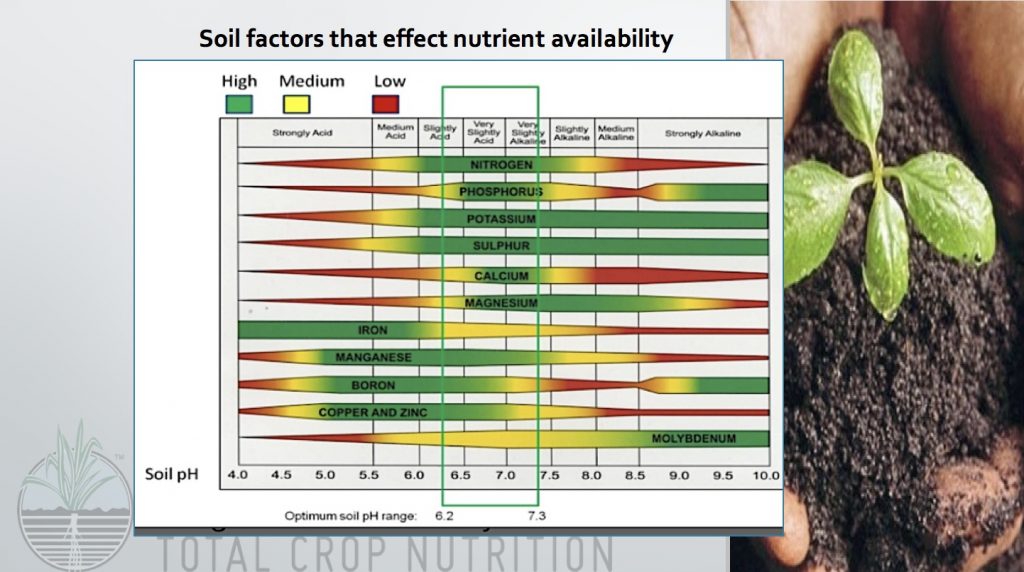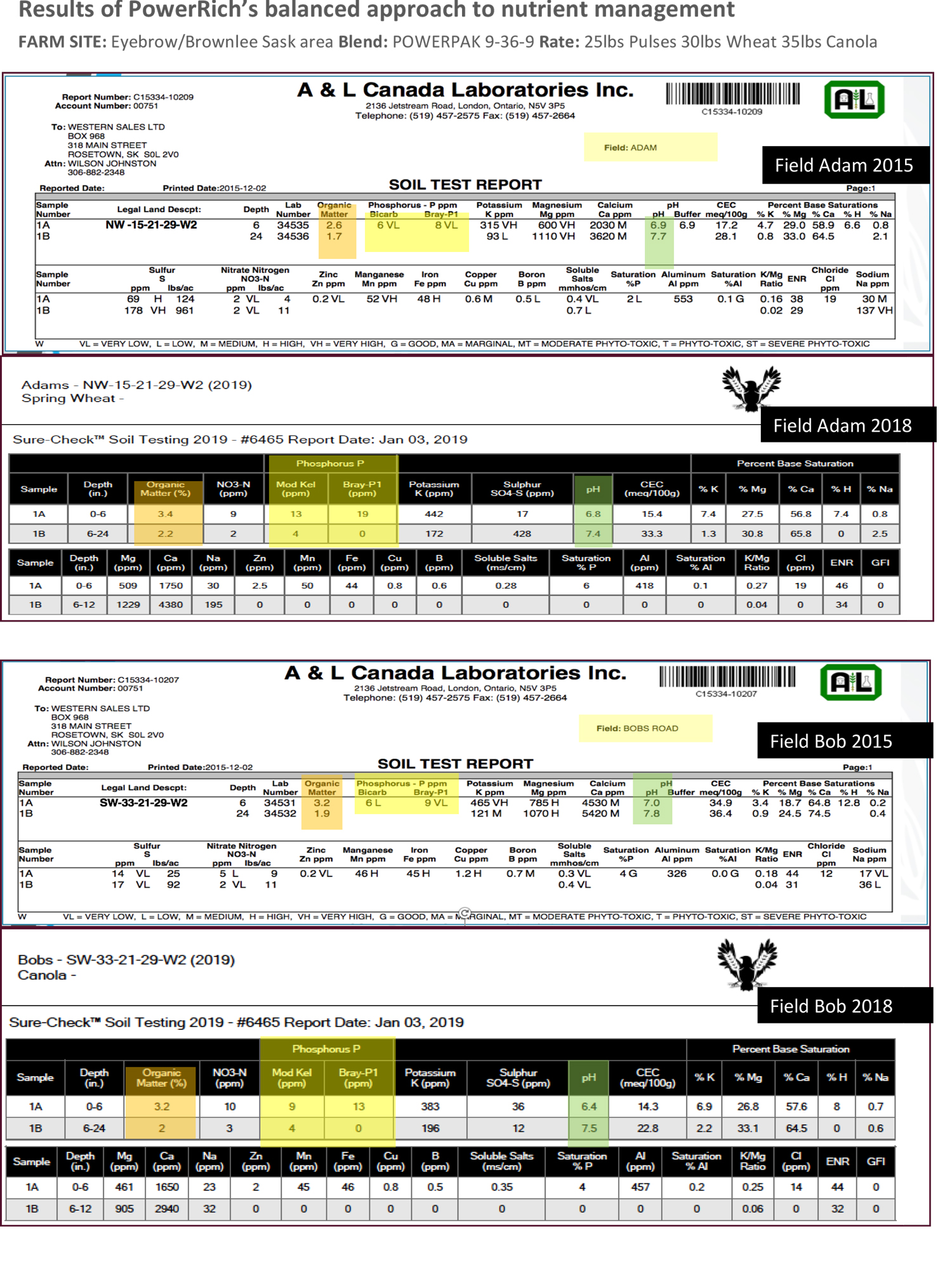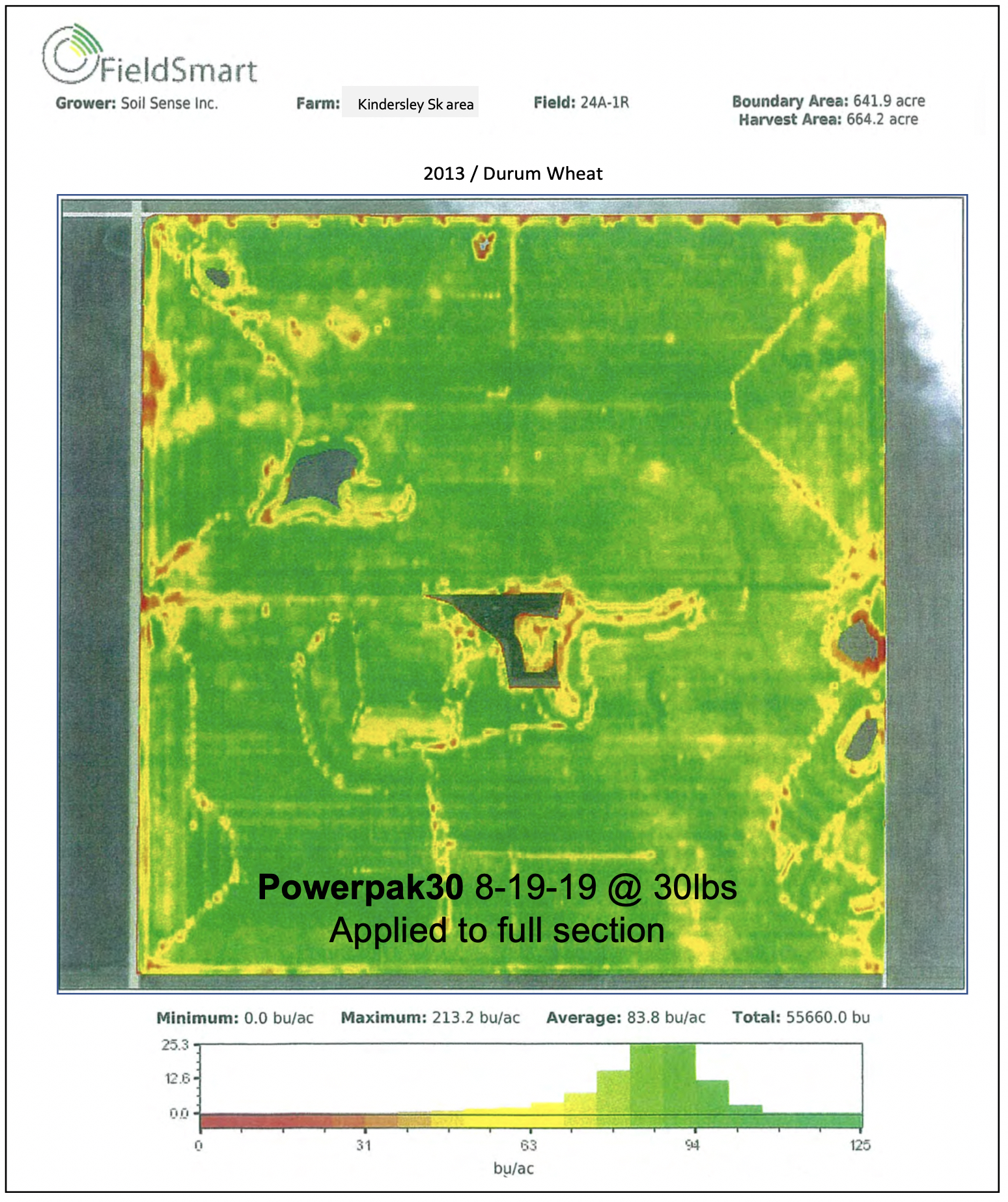Soil, Ph and Nutrient Availability
Physical and chemical characteristics of soil affect the availability and uptake of macro and micro nutrients
- Soil low in organic matter (less than 2%) may have lower micro nutrient availability
- Soils with higher amounts of clay (fine texture) are less likely to be low in plant available micro nutrients
- Sandy soils are more likely to be low in micro nutrients
- As soil PH increases from 6.0 to alkaline range, the availability of micro nutrients decreases, with the exception of molybdenum
- Improper PH causes nutrients to become tied up, and unavailable to young plants
- Generally, a soil PH of 6.8 is recommended where micronutrients are abundant

Declining Soil Fertility
Your soil is your future
Studies show the total amount of phosphorus (P) in the soil is very large. Typically, 1000kg/ha (900lbs/acre) of P is in the surface 15cm (6”) of soil alone. However, most P is present in chemical forms which have very little immediate availability to plant roots. Its tied up. So farmers need to apply phosphate fertilizer to their crops.
The problems start when even large yields are obtained, plant uptake of fertilizer phosphate applied may be as low as 10% and seldom exceeds 30%
PowerRich agronomist Shane Lacusta notes up to 80% of applied phosphate fertilizer can tie up within days leaving only a fraction available. As farmers apply more and more phosphate fertilizer in an effort to increase yield, the high salt and acid content adversely affects critical microbial populations and erode fertility leaving soils compacted, devoid of critical microorganisms and small beneficial animals like earthworms which constitute a food chain by increasing humus in soil. They also create cavities that hold water The next symptom is rising ph levels in some cases, making nutrients less and less available and further eroding the fertility of the soil. Up to 37% of chemical fertilizers can have no nutritive value. “It’s a viscous cycle and it’s not sustainable for the land or financially” says Lacusta “Your soil is your future. At PowerRich, we believe less salts and acids are better for your land, your plants and your bottom line”
Does PowerRich mine the soil of Phosphorus?
The shortest answer is no. Like we state above most if not all the P in the soil is tied up naturally and unavailable to plants. PowerRich’s Powerpak granular is a high grade PKS + micro blend engineered to breakdown and remain available longer, extending phos uptake while working with your current nitrogen program. Farmers that have been using PowerPak for over 20+ years have not seen a degradation in soil nutrients. In fact, customer soil samples over the years have shown an improvement in nutrient stock and lowering of ph levels in some cases.
Below are soil test results that a PowerRich customer has shared with us who has used PowerPak30 granular for consecutive years on two fields.
Note that P levels, soil organic matter critical to holding available nutrients and water, and soil Ph levels have improved as well as the overall health and fertility of the soil where these tests were conducted over a 4 year period.


Ready to get started?
Let us assist you in finding the right fertilizer program for your needs.
